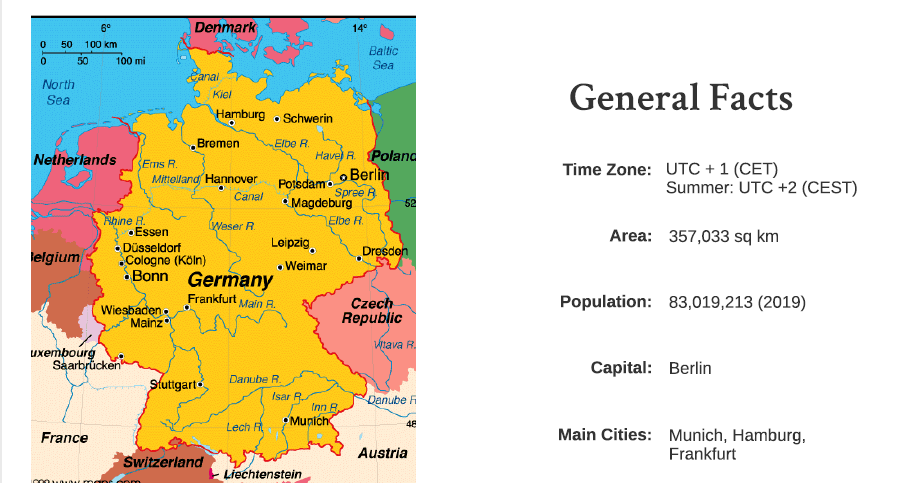Economy
Germany is the third largest export economy in the world and the third most complex economy according to the Economic Complexity Index (ECI). With a landmass that stretches from the North Sea and the Baltic Sea in the north to the Alps in the south, Germany has the largest population of any EU country. Currency: EURO GDP Per Capita: 46,258.9 USD (2019) GDP Growth Rate: 0.6%annual change (2019) Gross Domestic Product: 3,959,451.37 million (2019) GNI Per Capita: 55,980 PPP USD (2018)
Germany
Foreign Trade
The most important sectors of Germany’s economy currently stand industry (28.5 %), public administration, defense, education, human health and social work activities (18.2 %) and wholesale and retail trade, transport, accommodation and food service activities (16.3 %). Germany’s main export partners are France, the United States of America and the United Kingdom while its main import partners are the Netherlands, France, and China. Exports: The top exports of Germany are Cars ($156B), Vehicle Parts($68.1B), Packaged Medicaments ($55.9B), Planes, Helicopters, and/or Spacecraft ($30.9B), and Blood, antisera, vaccines, toxins and cultures ($29.7B). Imports: The top imports of Germany are Cars($68.7B), Vehicle Parts ($44.1B), Crude Petroleum ($32.4B), Packaged Medicaments ($27.6B), and Refined Petroleum ($24.4B).
Finances with European Union
Breakdown of Germany’s finances with the EU: Total EU spending in Germany:12.054 billion Total EU spending as %of German gross national income (GNI) : 0.35% Total German contribution to the EU budget : 25.267billion German contribution to the EU budget as %of its GNI : 0.73%

